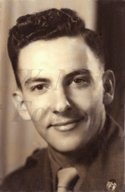
|

|
|
|
|
Ilience was born in Mamou, a small town in south Louisiana that thrives on rice farming and raising crawfish. He was born into a family of 10 siblings, with a father who bore the same first and last name--Smith Smith, who, himself, was the youngest of 17 children. His mother was Lucia Fuselier Smith. Neither spoke English. Ilience would learn English in school. Smith Smith raised corn and cotton. Soon, young Ilience, a child in the Great Depression of the 1930s was working on the farm along with his other brothers and sisters. Times were so hard, however, that two sisters "had to live with somebody else, relatives that could afford to feed them," he recalls. The family never owned a car. A mule and wagon provided their transportation. Besides farm work he held other jobs, beginning at age 12 when he worked at a meat market where he did the janitorial work and delivered meat to customers on a bicycle. Later he worked for a grocer, G. Ardoin and Company, as a delivery boy for patrons who called in their orders. The family moved to Tate Cove near Ville Platte where they sharecropped, then moved again, this time into a "cabin, a shack," he calls it, in Ville Platte. His father soon built another house for the family. A brother, who worked for an electrician, installed one light bulb in the living room. His mother cooked on a wood stove. "It was mostly gumbo," Ilience says and remarks that often they ate only rice with a roux. He recalls his two older brothers on the floor fighting over one plate of rice. "You know when you fight your brother for something to eat, it ain't the Taj Mahal," he quips. Breakfast often was cornbread and milk, which they kept cool in their well. They supplemented the dining table by hunting squirrels and catching fish, and raised hogs to butcher and smoke the meat. There in Ville Platte Smith Smith and some of his sons went to work for the WPA (Works Progress Administration). They helped build cabins at Chicot State Park that are still in use today. During World War II, while Ilience was in high school, he worked as a projectionist at the local movie theater. There he met his wife when she was in the "cry room," a place for fussy babies, where she was attending her two-year-old brother. A 17 Ilience moved to New Orleans to work in the factory making Higgins boats. "I was making little metal straps to hold down the electrical wires and I had one specific job. Facing the front of the craft there was a red light on the left front side. When that light came on and you were hitting the beach you got out of there and the gate came down. So years later I visited the Wartime Museum (World War II Museum) in New Orleans and all these veterans that built this Higgins craft and there's my line," he remarks. Ilience entered the service on December 12, 1945 and went for training at Fort Lee near Petersburg, Virginia. He was sent to Fort Jackson, South Carolina then on to Gamisch, West Germany, arriving on June 12, 1946. He was placed in the 4004th Transportation Company. While he served on front-line duty on the Soviet border during the Berlin Airlift, he would also use his movie theater skills and serve as a motion picture projector operator, often showing training films. From Grafenwoehr he was sent to Karlsruhe where he was transferred to the 3rd Division. After his service in Germany he was discharged at Fort Dix, New Jersey, In 1949 he married Ramona Thibideau who has since passed away. They would have seven children, eight grandchildren and two great-grandchildren. He was called up for active duty in the Korean War, and placed in a transportation unit at Camp Leroy Johnson in New Orleans, where he was a colonel's driver. He left the service in 1951 and remained in New Orleans working for a meat packing plant. He also went to a one-year barber school, just before he and Ramona moved to Villa Platte. He could not find barber work there, but his sister and brother-in-law invited the couple to Bossier City where he bought a barbershop and operated it for about twelve years, and would remain in the area. |


